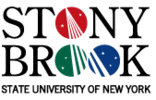
| IEEE International
Conference on Shape Modeling and Applications |
| Stony Brook University, June 4 - 6, 2008 |
News and Updates
Call for Papers
Organization
Important Dates
Paper Submission
Technical Program
Invited Speakers
Best Paper Award
Workshops
Mini-Symposia
Venue
Travel
Hotels
Social Events
Registration
About Stony Brook
Contact Us
Previous Conferences
Sponsors
Other Events
| Invited Speakers |
|
Bruno Levy is a researcher with INRIA. He is the head of the ALICE INRIA Project-Team. His main contributions concern texture mapping and parameterization methods for triangulated surfaces, and are now used by some 3D modeling software (including Maya, Silo, Blender, Gocad and Catia). He obtained his Ph.D in 1999, from the INPL (Institut National Polytechnique de Lorraine), and was hired by INRIA in 2000. He served on the committee of ACM SPM, IEEE SMI, ACM/EG SGP, IEEE Visualization, Eurographics, PG, ACM Siggraph, and was program co-chair of ACM SPM in 2007 and 2008. He was recently awarded a grant from the European Research Council (European-wide CfP, all disciplines of science, acceptance rate: 2%) Title: Next-Generation Geometry Processing: From Numerical to Symbolic Computation
Abstract:
Home |
News and Updates |
Call for Papers
|
Organization
|
Important Dates
|
Paper Submission Technical Program | Invited Speakers | Best Paper Award | Workshops | Mini-Symposia Venue | Travel | Hotels | Social Events | Registration | About Stony Brook | Contact Us Previous Conferences | Sponsors | Other Events Page maintained by webadmin |
